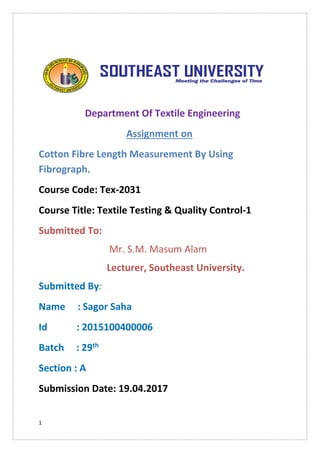The document discusses fiber length measurement using a fibrograph. It provides details on the fibrograph machine, including its parts and working principle. The fibrograph works by scanning cotton fibers with light sensitive cells and drawing a length-frequency curve called a fibrogram. Key measurements taken from the fibrogram include mean length, upper half mean length, and various span lengths which are used to classify cotton according to staple length. The fibrograph provides a realistic measurement of fiber length oriented similar to fibers during processing.








